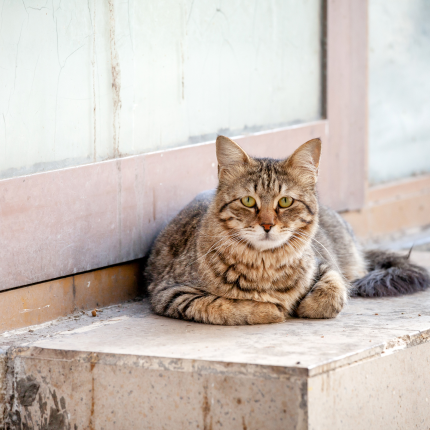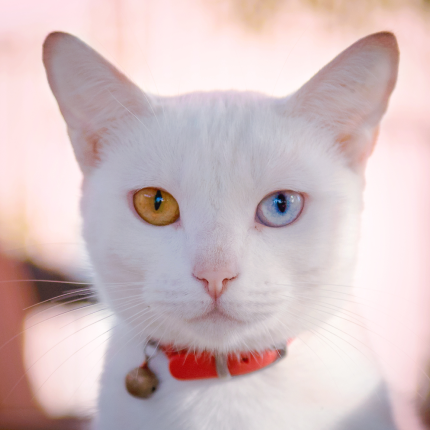Feral Cats: Who They Are, and Why They’re Not Considered Stray Cats

You may have heard the term “feral” used interchangeably with “stray” or “outdoor” cats, but this isn’t accurate. So what exactly is a feral cat? Feral cats have unique characteristics; they are considered wild and are often unable to live indoors. Due to this, they usually live outdoors their entire lives, which can be controversial.
advertisement
What is a Feral Cat
A feral cat is an offspring of a domestic cat that has never been exposed to humans. Experienced handlers must treat them with extreme care when they are near humans because of their intense fear of humans. Feral cats usually live in colonies with other feral cats and avoid most human contact. Because of these factors, feral cats are a specific type of stray and tend to show extreme fear around humans.
If a cat was previously kept in a home or was socialized by humans as a kitten, it is more likely that it will respond to human attention and be able to live in a home again, even if it takes some time to regain confidence and readjust. It is not feral if a stray approaches you on the street, lets you pet them, or purrs and vies for attention.
How to support them
Feral cats are considered wild animals, so they do not quickly adapt to living indoors. Any handling or close interaction with humans can be highly stressful for feral cats. Feral cats forced to live in captivity can suffer physical and emotional problems. A colony of feral cats is the best place for feral cats to live since they can avoid most human contact. Colonies often form near garbage dumps or livestock barns where they have a steady supply of food and can hide from cold, rain, and extreme heat. Humans can help feral cat colonies by providing food, water, and shelter and trapping, neutering, and releasing them.
Trap, Neuter, & Release Programs
Through programs known as trap, neuter, and release (TNR), animal shelters and rescue groups can provide primary healthcare and sterilization to feral cats. In these programs, feral cats are humanely trapped and spayed or neutered before being released back into their colonies. As a result, feral cat populations can be controlled while allowing them to live their lives in their colony.
Trapped cats may also receive basic vaccinations and deworming while sedated. The community is thus prevented from becoming infected with contagious diseases. Additionally, the tip of their ears is surgically clipped while sedating, so they can be easily identified as cats who have already been spayed or neutered. In the future, they will not be trapped and sedated unnecessarily.
Wildlife at risk
Feral cats can also be the subject of controversy. Wildlife and other animals are at risk from feral cats and stray or outdoor cats. Cats are excellent hunters and will kill small rodents and birds, including domestic chickens, when they have the chance. Some community members do not want cats around because they are avid birders or keep chickens or other small animals in their yards. A sizeable feral colony can significantly impact local wildlife because cats do not care if the wildlife they hunt is endangered. In the United States, domestic cats kill billions of birds and mammals yearly.
For this reason, many people do not welcome feral cat colonies, and some even kill feral cats.
advertisement
Carriers of diseases
Feral cats can also carry diseases infecting domestic pets and other wildlife. In feral colonies, cats often live in large groups and physically fight one another to spread feline viruses such as feline leukemia (FeLV) and feline immunodeficiency virus (FIV). A pet cat that gets loose outside and comes into contact with a feral cat carrying one of these viruses may also contract it. Other viruses, such as rabies, can also infect other species.
Often, there is no straightforward way to address these concerns and consider feral cat welfare. However, there are many ways to address these challenges, including TNR programs with vaccinations, finding appropriate spaces for feral colonies, and removing feral cats from areas where wildlife is endangered.

Featured Articles

Polydactyl Cats: Just More Beans to Love
Polydactyl cats have become extremely popular in recent times. As a result, more and more people are interested in learning more about this six-toed cat and want to get one of their own. If you are a cat lover intrigued by polydactyl cats, you have come to the right place….

Why Do Cats Roll Over Into Their Backs But Not Let You Touch Their Bellies?
It’s common knowledge dogs love to have their tummies rubbed when they freely lay down before you and roll onto their backs. But, if you’re also familiar with cats, you know that when they roll onto their backs with their bellies exposed, rubbing the belly will most likely result in…

The Odd-Eyed Cat (AKA Heterochromia)
Cats are already beautiful and fascinating creatures, but people are bound to take notice when they have something as captivating as two different colored eyes. Odd-eyed cats always have one blue eye paired with either a green, yellow, or brown eye. This form of heterochromia occurs in other animals, including…
